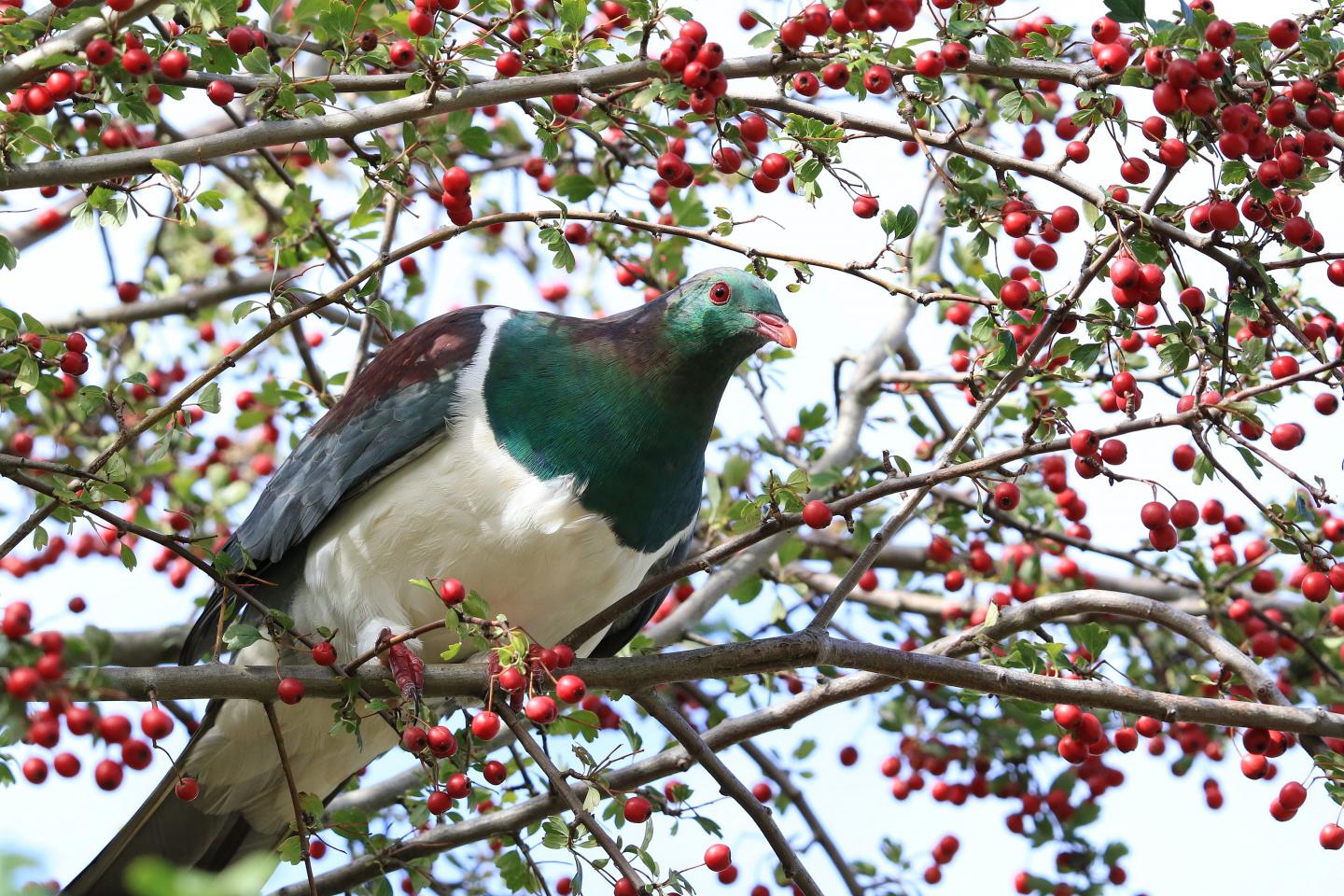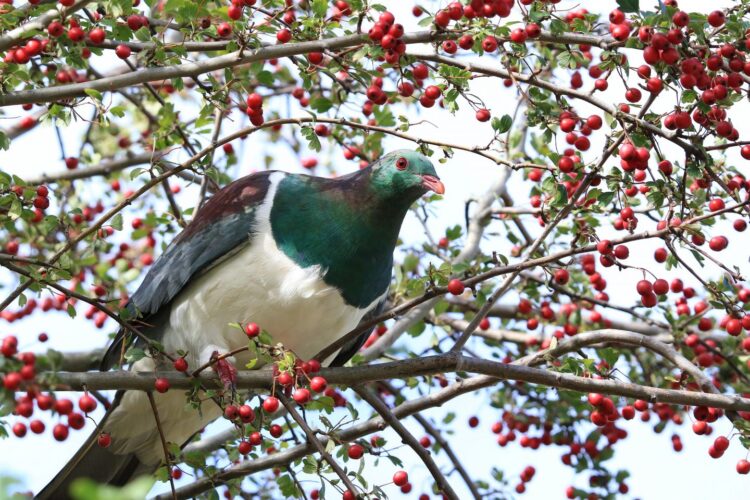Introduced species are reshaping how plants and animals interact in ecosystems worldwide

Credit: Steve Attwood
As introduced species spread around the world, the complex networks of interactions between plants and animals within ecosystems are becoming increasingly similar, a process likely to reinforce globalization’s imprint on nature and increase risks of sweeping ecological disruption.
Researchers at the University of Maryland’s National Socio-Environmental Synthesis Center (SESYNC) and at the Center for Biodiversity Dynamics in a Changing World (BIOCHANGE) at Aarhus University, have found that introduced species are reshaping mutualistic relationships between plants and animals at an accelerating pace, creating new ecological links between previously disconnected ecosystems. Their new study is featured on the cover of the Sept. 3 issue of Nature and published online September 2.
Featured on the cover of the Sept. 3 issue of Nature, the study was carried out by researchers at the University of Maryland’s National Socio-Environmental Synthesis Center (SESYNC) and Center for Biodiversity Dynamics in a Changing World (BIOCHANGE) at Aarhus University.
Losing Biodiversity’s Portfolio Effect
Biodiversity is changing worldwide not only through the loss of species, but by species composition becoming more similar across different regions–a process called biotic homogenization. Just as diversification in an investment portfolio buffers it from downturns in certain sectors, diversity across ecosystems buffers natural systems from widespread collapse. The researchers found that homogenization affects mutualistic networks made up of plants and the animals that disperse their seeds. By compiling data from hundreds of sites around the world, they found that interactions involving a plant or animal that was an introduced species has increased seven-fold over the past 75 years. The resulting loss of the portfolio effect poses greater risk of sweeping disruption by broad-scale stressors such as climate change or disease outbreaks.
Introduced species are also influencing the structure of mutualistic networks in ways that reduce stability of individual ecosystems. When researchers look at the web of species interactions within natural ecosystems, there are often ‘compartments’ of closely interacting species that interact little outside their compartment. “This makes a network resilient because a disturbance such as overhunting, disease, or a pesticide that affects a certain species does not spread to affect species in other compartments,” explained study author Evan Fricke, of SESYNC. The study shows that introduced species are often so generalized that they interact across multiple compartments, causing the loss of compartmentalized network structure and exposing more species to a given disruption.
A Breakdown of Geographic Isolation
The research also shows how regions that naturally had different combinations of species and interactions because of historic geographic isolation now are linked. “Eurasian blackbirds dispersing hawthorn seeds is a common mutualistic interaction among species native to Europe,” Fricke said. “Today, that same species interaction also occurs on the opposite side of the planet in New Zealand where those species have been introduced by people.”
The researchers quantified how introduced species have altered geographic patterns in the global web of mutualistic interactions. “What’s striking to see is that natural biogeographic patterns that have existed for millions of years are being erased so quickly,” Fricke said. A consequence of these new connections is that co-evolved relationships unique to isolated places in Madagascar, Hawaii, or New Zealand are now affected by introduced species. The loss of isolation changes the co-evolutionary trajectories of these mutualisms, which may cause species to evolve traits more similar to species in other parts of the world. “However, the introduced species may with time also themselves diverge from their source populations, adapting to their new setting,” added study author Jens-Christian Svenning, professor and director of BIOCHANGE.
Feedbacks Shaping Future Ecosystems
As mutually beneficial interactions, seed dispersal mutualisms can determine which species are successful as ecosystems change over time. Compared to native species, introduced species are twice as likely to interact with partners that are also introduced, according to the study. This feedback may favor regeneration of introduced plants over native species. “These could have knock-on homogenizing effects for plant communities during natural reforestation of degraded forests, as well as plant range shifts as a result of climate change,” Fricke said.
Managing the Loss of Complexity
“While many unintentionally introduced species may cause homogenizing effects that threaten ecosystem integrity, other introduced species may provide ecological benefits or even reverse the effects of biotic homogenization,” Svenning continued. In the Hawaiian Islands, introduced animals perform nearly all seed dispersal for native plants after numerous extinctions and severe declines in native bird populations. While Hawaii represents an extreme case, ecosystems around the world have experienced steep declines of their largest animals, many of which are important seed dispersers. Like the birds in Hawaii, introduced large mammals can perform functions missing due to the decline of native species. “Our future research will target which species interact in ways that are likely to further homogenize ecosystems and those that can reverse homogenization by filling ecological roles lost due to past species decline,” Svenning concluded.
###
Media Contact
Erin Duffy
[email protected]
Related Journal Article
http://dx.





